San Francisco’s first Catholic newspaper The Monitor was published by the city’s Archdiocese from 1858 to 1984. Gleeson has the most complete holdings of the newspaper in existence as part of our microfilm collection.
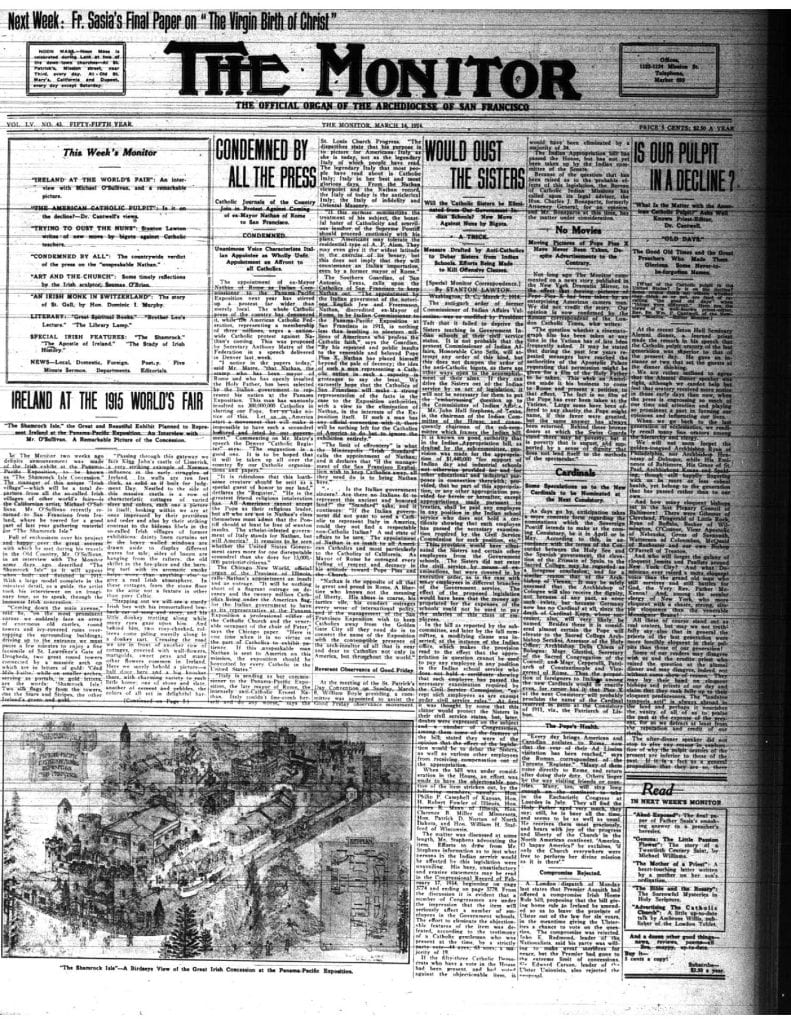
The paper is an indispensable resource for any researcher interested in the history of the (heavily Irish) Catholic community in San Francisco at the turn of the 20th century. As there is no index, researchers most often must peruse through many years of issues, scanning the pages for their topic of interest. However, this set of microfilm is one-of-a-kind, so we do not lend it out via interlibrary loan. Interested users must physically visit Gleeson. Accordingly, numerous professors, PhD candidates and independent scholars from around the world travel here, often making a series of visits. Over the course of a few days they spend many hours looking through microfilm reels.
While PDF scans of individual pages from off of the reels may be made using our digital microfilm reader (seen above at top of this post), the screen on our classic older microfilm reader generally is a bit easier on the eyes for scanning through hundreds of pages, and most visitors have previous experience with this equipment.
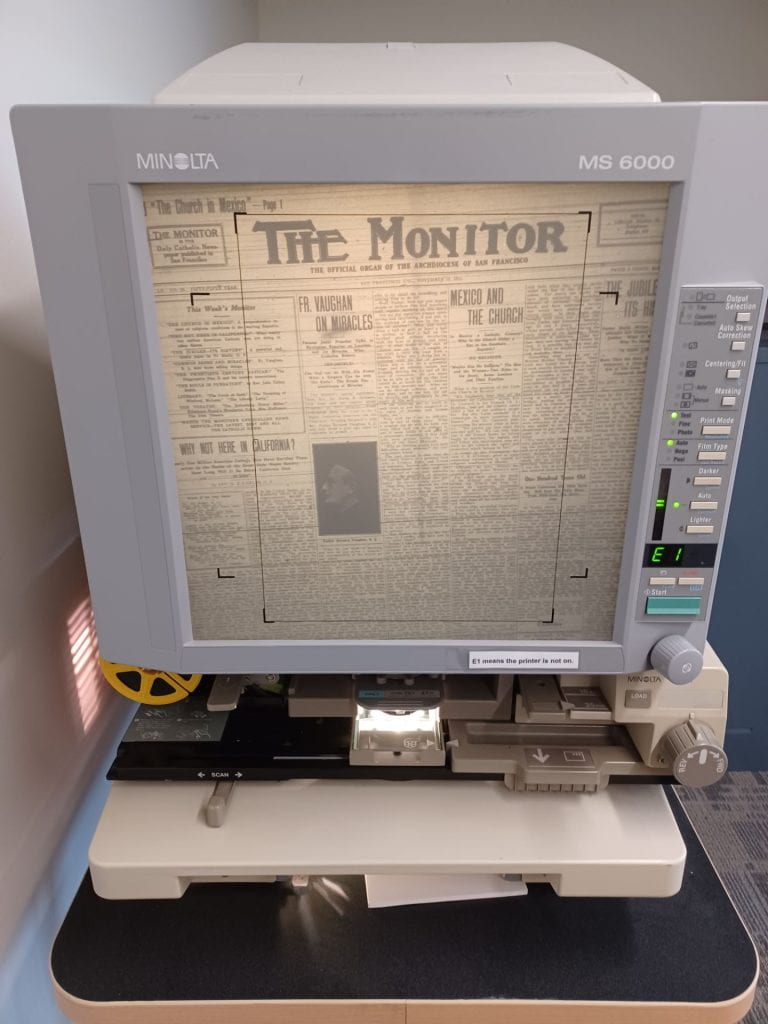
The Monitor provides an excellent glimpse into special events and important major as well as minor historical figures from the Catholic world of the period. For instance, here is a Mar 18, 1916 announcement for an upcoming lecture on “The Spirit of the Missions” by Joseph Scott traveling up from his home in Los Angeles where in 1902 he was appointed to lead the Catholic fraternal organization the Knights of Columbus for the western United States.

Scholars are also able to explore and track developments of past injustice and instances of historical bias. In one such example, on March 21, 1883 there appears notice for the opening of a Chinese Catholic School which is expected to bring “many converts” into “the Church” and “effect some good among a pagan people.” A jarring reminder of just how overtly cultural prejudice stains the historical record.
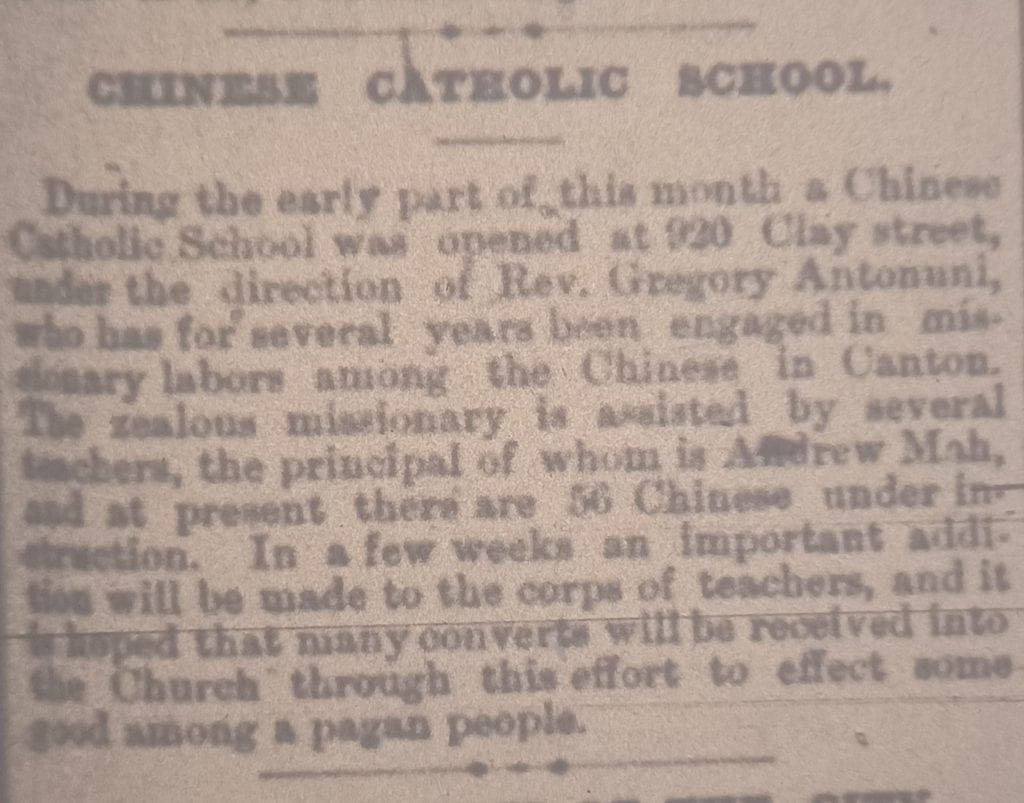
And of course as might be expected there’s a plethora of classic looking old-time advertisements splashed across the pages.
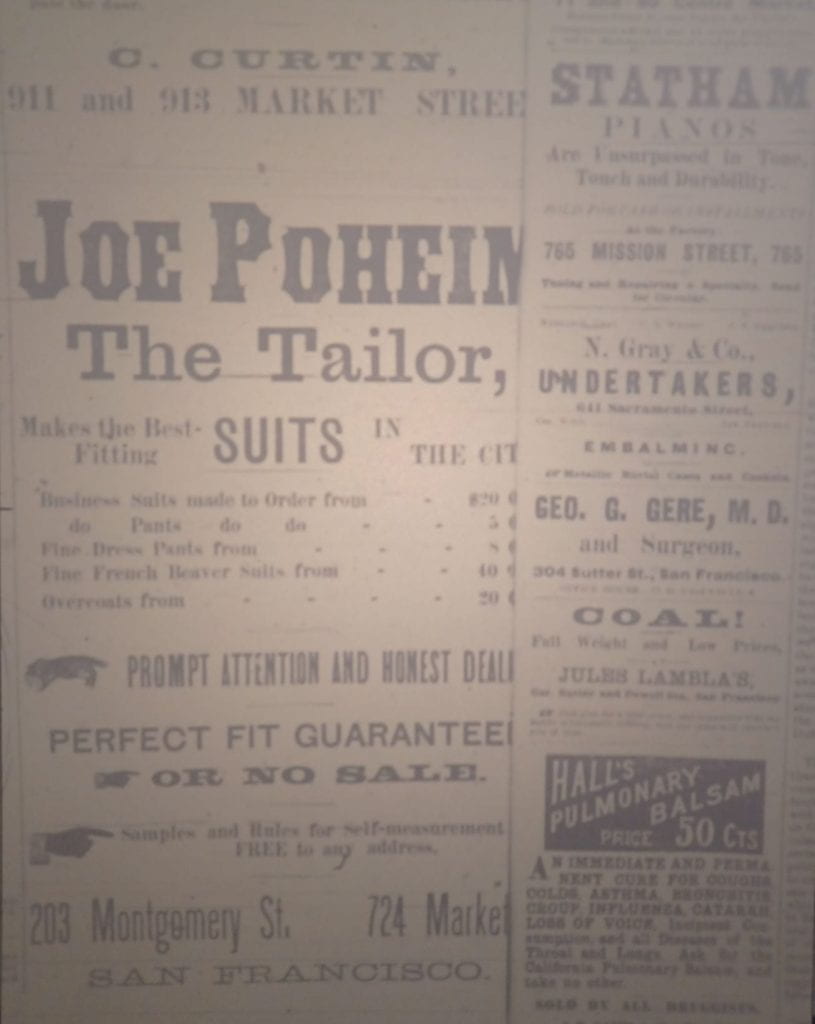
Our microfilm holdings of The Monitor consist of a total of 113 reels of microfilm. The earliest years are very incomplete with gaps of missing issues. Five of the reels contain copies of some of the issues missing from other rolls of miscellaneous earlier years along with “special supplemental” issues for Christmas, etc., as well as in some cases retakes of earlier issues.
As the microfilm was created most likely sometime in the 1950s or later, using whatever best copy of the physical paper was extant at the time, for many of the earlier years the image quality is far less than ideal. There are often creases and crinkles to the paper which hinder the readability of certain lines.
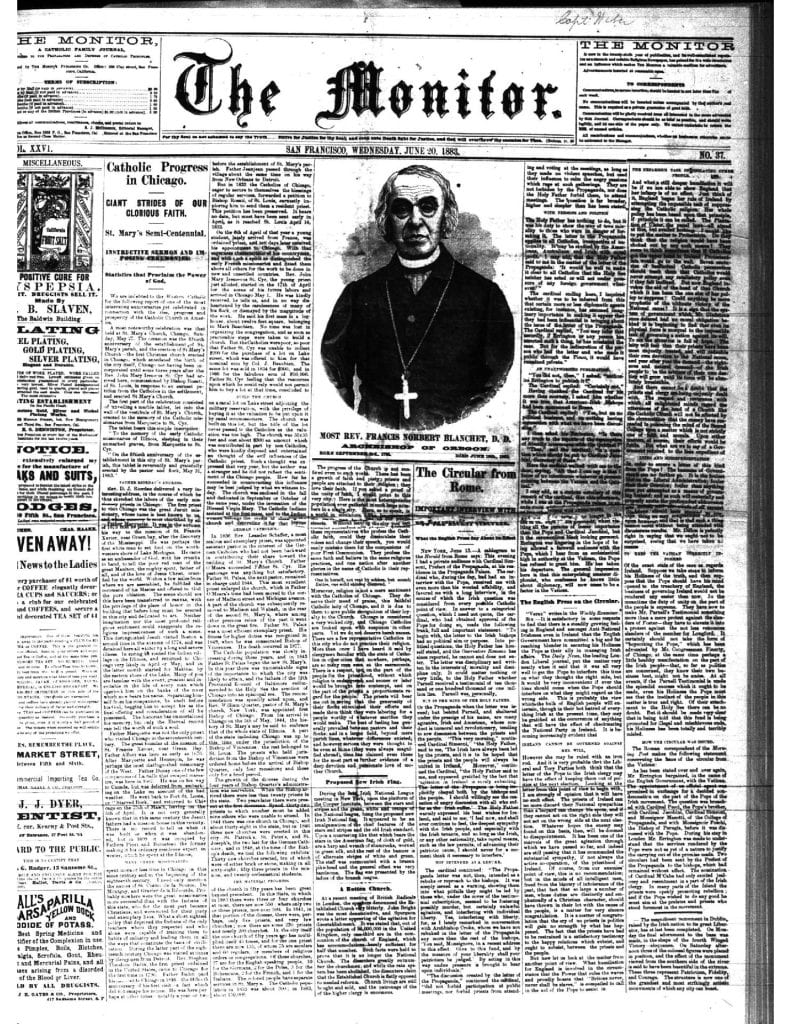
While for a few issues the ink from the other side of the paper page bleeds through.
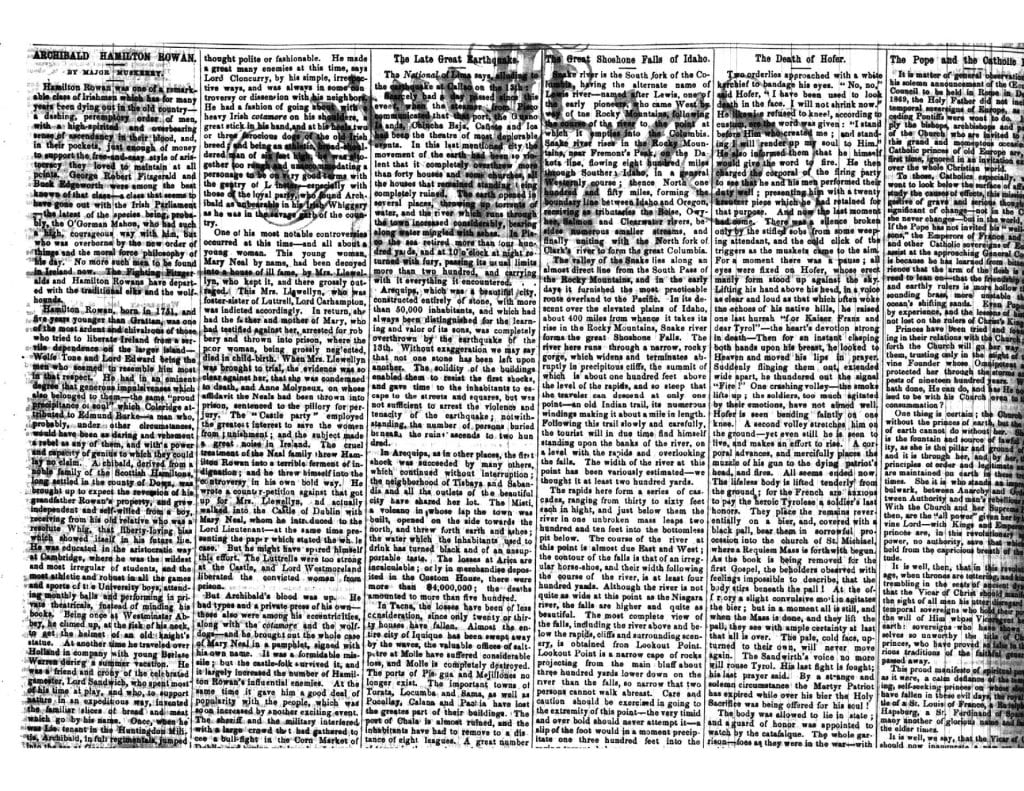
And in other cases, there is simply damage, such as a rip or tear.

Despite these challenges, researchers are always thankful for the availability of what we are able to offer.
Gleeson’s earliest holdings extend as far back as Dec 14, 1861—May 1965 continuing on to June 10, 1865—February 27, 1875, January 24, 1878—October 16, 1920, and finally May 1, 1926—June 14, 1984. Also, as the linking in our records indicates, selected issues ranging from July 8 1871—Nov 30 1965 are now available online.
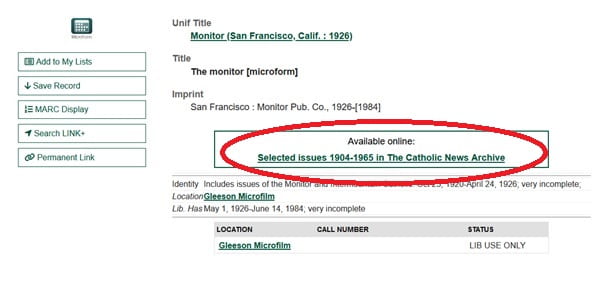
Seeking to make the collection as accessible as possible, Gleeson Library has supported digitization of the Monitor in partnership with the Archdiocese of San Francisco Archives and the Catholic Research Resources Alliance (CRRA). To date, there are 808 digitized issues of the Monitor available through the Catholic Newspaper Archive.
Funding for the digitization of this newspaper was provided by the Catholic Communication Campaign of the US Conference of Catholic Bishops and other supporters of Catholic Research Resources Alliance (CRRA).
All of the earliest years now available in The Catholic News Archive were scanned from off the library’s microfilm. As funding for the project becomes available we pack up a few reels at a time and ship them out to be scanned. The reels are returned a few weeks later and go back into our storage cabinets on the lower level where they remain housed as physical back up copies of what’s online.
